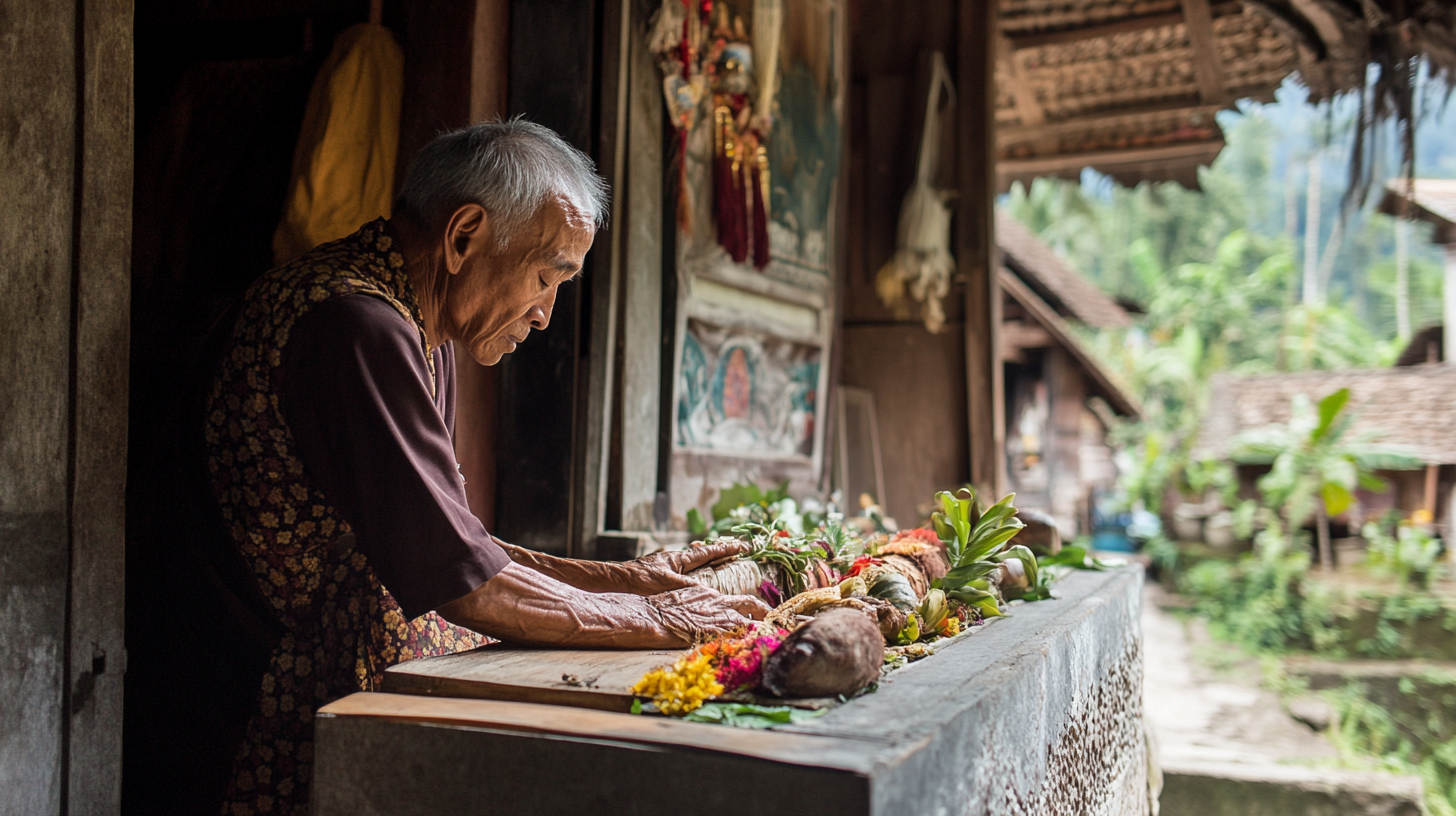
Death may be universal, but the rituals surrounding it are as diverse as humanity itself. While many cultures are familiar with traditional burials or cremations, others take an entirely unique approach to honoring the dead. Some communities view death as an occasion for transformation or celebration, not just sorrow, and their burial practices reflect this perspective. From hanging coffins on cliff sides to turning loved ones into coral reefs, these unusual burial customs provide a fascinating glimpse into humanity’s relationship with mortality. Here’s a journey through some of the most extraordinary and surprising burial rituals from around the world.
- The Cliff-Hanging Coffins of the Sagada, Philippines
In the mountainous regions of the Philippines, specifically in Sagada, members of the Igorot tribe practice an ancient tradition that leaves tourists and locals alike in awe—the “hanging coffins.” Instead of burying the deceased underground, they place their coffins on the faces of towering cliffs, attaching them to the rock walls.
The ritual dates back over 2,000 years and is rooted in the Igorot belief that the higher a coffin is placed, the closer the soul is to heaven. The coffins are often handmade by the deceased before death, and family members carry them to the cliffs. Hanging coffins are now rare, yet they remain a powerful symbol of the tribe’s spiritual beliefs and respect for the natural world.
- Sky Burials of Tibet: Offering the Body to the Vultures
One of the world’s most striking and misunderstood burial practices, Tibetan sky burials embody the Buddhist principle of compassion and the impermanence of life. In this practice, bodies are left on mountaintops to decompose naturally or to be consumed by vultures. Tibetan Buddhists believe that the human body is simply a vessel for the soul, and after death, the body should return to the Earth in the most natural way possible.
Sky burials allow monks to carry out ritual prayers over the body, guiding the soul to the afterlife. Despite the shocking nature of this ritual to outsiders, for many Tibetan Buddhists, this method provides closure and peace, knowing that their loved ones are contributing to the cycle of life.
- The Famadihana of Madagascar: Dancing with the Dead
In Madagascar, the Malagasy people have a vibrant and celebratory way of honoring their ancestors: the Famadihana, or “turning of the bones” ceremony. Every five to seven years, family members exhume the remains of their ancestors, rewrap them in fresh shrouds, and celebrate with dancing, music, and food.
This lively event is intended to reinforce family ties, allowing the living to share their lives with the deceased and seek their blessings. It’s an opportunity for the Malagasy to reconnect with their past, and though it may seem unusual, it’s a profoundly personal and joyful tribute.
- Torajan Death Rituals in Indonesia: Preserving the Dead as Living Guests
In Tana Toraja, Indonesia, death is not a final farewell but a long goodbye. When a loved one dies, the Torajan people keep the body in their home, treating it as if it’s still alive until the family can save enough money for an elaborate funeral, sometimes lasting months or even years.
During this period, the deceased is given food, drinks, and clothes, and they are spoken to as if still part of the family. Once the funeral is held, the body is laid to rest in a traditional burial tower or a rock grave, and the community gathers for a grand celebration. This unique approach allows the Torajan to say goodbye gradually, in a way that helps families process their loss.
- Turning Ashes into Coral Reefs in the United States
For those passionate about marine life, becoming a part of the ocean ecosystem after death is not only possible but celebrated. In a practice pioneered in the United States, individuals can have their ashes transformed into an artificial coral reef structure, creating an “eternal reef.”
The ashes are mixed with environmentally safe concrete, forming a structure that mimics the texture of a natural reef. These “memorial reefs” are then submerged in designated underwater locations, providing a habitat for marine life and promoting ecological balance. It’s a beautiful tribute for those who cherished the sea, creating a lasting legacy of life and renewal.
- Tree Burial of the Caviteños in the Philippines
Another unusual burial practice found in the Philippines, specifically among some indigenous communities in the Cavite region, is the tradition of tree burials. In this practice, the bodies of young children who pass away are buried inside the hollow of a tree trunk.
The tribe believes that the spirit of the tree will guide the child’s soul to the afterlife. Families choose the tree during the child’s life and prepare it for this purpose. Tree burials are less common today but are an ancient, beautiful way of blending human life with the natural world, providing a unique form of peace and harmony with nature.
- Ghana’s Fantasy Coffins: Artistic Farewell in Style
In Ghana, saying goodbye is not complete without a statement coffin. The Ga people commission elaborately designed “fantasy coffins” that reflect the passions, interests, or professions of the deceased. If someone was a fisherman, the coffin might take the shape of a fish; if a pilot, a plane.
This practice is about celebrating life rather than mourning death, with each coffin handcrafted and painted to capture the spirit and personality of the deceased. These fantasy coffins have garnered international fame, serving as a reminder that life—and even death—should be as vivid as possible.
- The Sati Stones of India: Monuments of Sacrifice
Though now outlawed, the practice of sati was once a traditional ritual in parts of India. Widows would immolate themselves on their husbands’ funeral pyres, believing it to be a supreme act of loyalty. Today, however, sati is banned, and what remains are sati stones—memorials that bear the handprints of the women who performed this ultimate sacrifice.
While these stones serve as a somber reminder of an ancient tradition, they also symbolize the shift in cultural values over time. Modern India recognizes and respects the contributions of women without requiring extreme acts of sacrifice, demonstrating how death rituals can evolve to reflect society’s values.
Conclusion: Beyond Life and Death
These burial practices reveal how cultures around the world honor life and approach the inevitability of death in distinctive ways. Each ritual is a testament to how societies interpret the mysteries of life and the afterlife, blending tradition, spirituality, and respect for nature.
So the next time you think about a cemetery or a traditional funeral, remember there’s a whole world of burial customs beyond the ordinary—each one adding a unique chapter to the story of humanity’s enduring quest to understand, celebrate, and honor life, even in death.








Can you be more specific about the content of your article? After reading it, I still have some doubts. Hope you can help me.